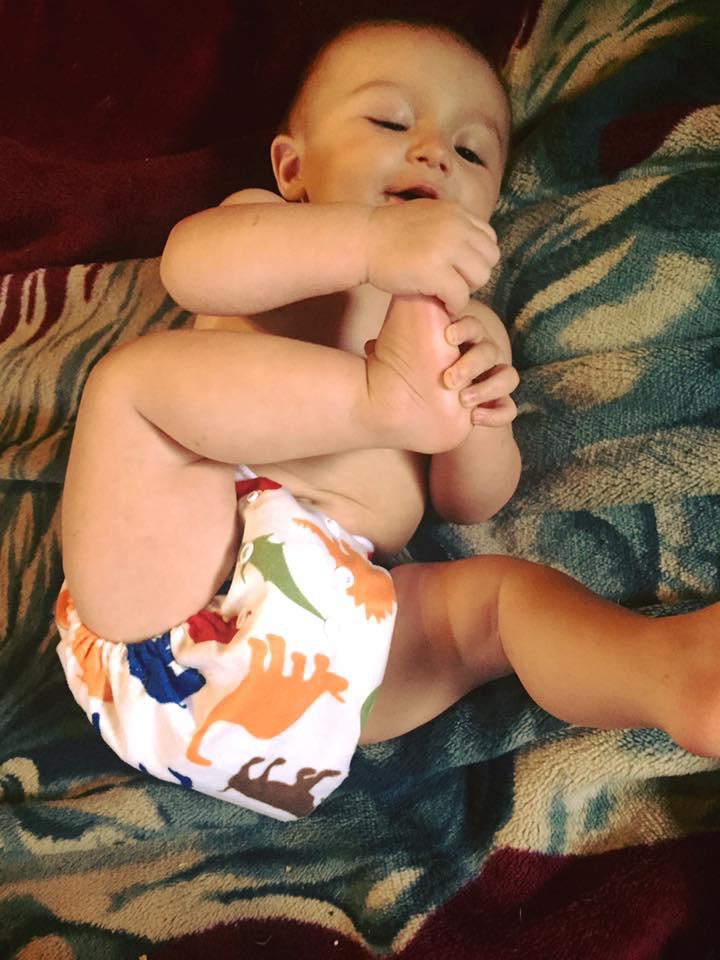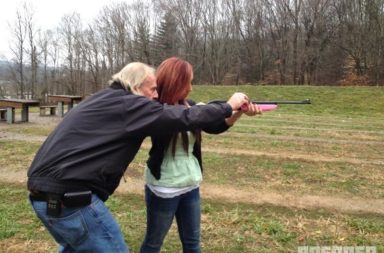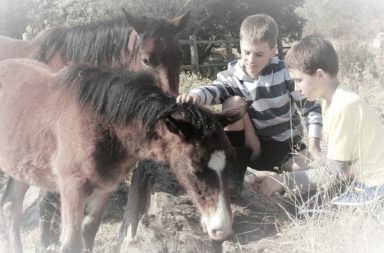Prepping with babies can be a scary prospect. But, it is also an aspect of your survival plan you cannot afford to ignore one that should not be ignored – even if there are no little bundles of joy in your family or mutual assistance group right now. Babies will be born during a long-term disaster, regardless of all the responsible steps you may take to ensure that does not happen.
Stockpiling diapers and formula not only would take up a ton of space, but would be quite expensive, as well. Babies need more than fresh diapers and formula to survive, but merely contemplating how to buy and store those two essential infant items can be quite daunting.
Just like with all other aspects associated with living a prepared life, you need to make a list of everything you need, start small and gather a few items from each category on the list each payday, and then learn how to produce or make as many of the prepping needs yourself.
Mobility
When you think of any disaster situation, your first concern will more than likely be a permanent shelter for the entire family and group to bug-out to during the emergency. Of course you are going to want to make sure that your baby or toddler is protected from the elements, but more will need to be done to ensure that your little ones will be as safe as possible.
Let’s imagine that your group decides it is time to start hiking to your next destination for more supplies or to get away quickly from conflict caused by the nearby crooks. You still have miles to go until you get where you need to be and there your baby is, hanging on your hip. You are already beat by exhaustion from lack of sleep, not eating as much as you normally would, all while engaging in way more physical activity than you are used to, and with all the life-changing stress that is actually taking a toll on your health.

Do you really think you will have the energy to carry your baby or a tired and whining 35-pound toddler on your hip? During a bugout situation you could very well be so exhausted that taking just another single step with a bugout bag on your back will feel too physically taxing to undertake.
To get to your bugout location as quickly as possible will require you to conserve energy any way you can. Your baby will have absolutely no chance at survival if you cannot get the infant out of the elements.
There are multiple traditional baby transportation options available for a nominal cost, but you must evaluate each from a survival standpoint and choose wisely – the life of both baby and its parents depends on it.
Baby Wraps
A baby wrap style carrier will keep your baby close to you and allow you to remain hands free while bugging out, but such a transportation device also has distinct disadvantages. While a baby carrier that can either be tied around the adult’s shoulder and adjacent hip or the type that goes from the back over the shoulders will keep your hands free, it will not lessen the weight burden that comes with simpy toting a little one in your arms.
Wagons
A wagon that is designed for rugged use is a decent option, but also comes with its own set of problems. Pulling a wagon over rugged terrain will be labor intensive and might even tip over. Pulling a little one behind you will also likely prove a distraction that will cause you to frequently look backwards to check on the child, diminishing your level of situational awareness significantly.
The upside to using a wagon to transport a child involves the handy storage compartments many models are equipped with as well as folding canopies that protect the little one from the sun and rain.
High end collapsible wagons are typically more lightweight than standard wagons and some models have a push instead of a pull, arm attachment.
The Outdoor Folding Push Wagon would make the ideal wagon when any disaster would strike.
You can push this wagon with no issues on grass, gravel, and dirt while carrying up to 120 pounds. There is conveniently a built-in basket for you to carry along snacks, toys, beverages, first-aid supplies, and even a bug-out bag. When it is raining out during your travel, your kids and supplies will stay dry thanks to the amazing canopy. You don’t have to worry about taking up too much space in your shelter because the wagon folds up in three easy steps and can easily be placed in the corner somewhere.

If you will be transporting more than one baby or toddler and feel you must use a wagon, the rugged outdoor model shown below may be your best bet.
Strollers
Purchasing a stroller, the right type of stroller, is likely the best way to transport a single child during a bugout scenario. Investing in a durable stroller designed for off road use with all-terrain wheels cannot be recommend highly enough.
An umbrella stroller would be far less expensive, but any parent who has pushed one of those bargain strollers even over level pavement can surely attest to how problematic those cheap little wheels can become.
Umbrella stroller pic goes here
The BOB Revolution PRO Jogger Stroller is a perfect example of the stroller you need during a SHTF scenario. The swivel-front wheel locks for stability for easy mobility and when jogging. This stroller also has a mountain bike-style suspension and air-filled tires which will provide your little one with an ultra-smooth ride when hiking to your destination, even on the most rugged terrain. You won’t have to worry about your little one flying out when jogging downhill because the adjustable handlebar has a hand brake that provides downhill control. Your baby or young child will fit comfortably as long as he or she is under 75 pounds.
Diapers
You may think that you are stocked up on diapers to get through a long-term disaster, but it is virtually impossible to store enough diapers to keep your baby having a clean bottom for very long. Babies need changed at least ten times daily.
You would need approximately 300 diapers a month to ensure your baby is fresh and doesn’t get a rash from staying in a soiled diaper for too long. It does not take a math genius to factor how many diapers you would have to stockpile for a 12-month (or longer) SHTF scenario.
It would be both far less expensive and space conserving to use old-fashioned cloth diapers instead of disposable ones. You can find free cloth diaper patterns and removable inserts patterns online that less than a half and hour to make – even for a novice sewer.
Diaper Rash Relief
Coconut oil has many home remedy uses, including preventing and treating diaper rash. The carrier oil can be gently rubbed onto your baby’s rash to heal it, while also soothing the discomfort that provokes copious amounts of loud crying.
A chamomile-based ointment will also help dry up and soothe a diaper rash. To make this natural diaper rash reliever mix together 2 tablespoons powdered chamomile flowers and ¼ cup of cornstarch. Sprinkle the powder mixture on the bottom of your baby after each diaper change to prevent rash. You can also gently pat mixture on rash if one develops.
Food
Of course nursing is considered the healthiest way to feed babies, not all mothers can produce enough milk to fulfill a baby’s nees – and not all mommy’s will survive a long-term disaster. You can stockpile the shelf-stable ingredients to make your own baby formula and baby food rather economically. The recipes themselves are simple to make, even in an off grid living situation.
Emergency Baby Formula Recipe
Ingredients
- 1 1/2 cups boiled water
- 2 teaspoons sugar
- ¼ cup non-instant powdered milk – or 1/3 cup and 2 tablespoons instant powdered milk
- 1 tablespoon cooking oil
Directions
- Mix together the water and powdered milk thoroughly
- Add sugar and oil
- Mix thoroughly again
Making baby food is a also cheaper than buying baby food from the store. You can simply just mash together what you’re serving to the rest of your family or group. All you need is a fork or a baby-food maker such as: baby-food grinder, blender, food processor, electric baby-food maker, or hand-turned food mill.
Green Pea Puree Recipe

Ingredients
1 cup of fresh or frozen petite peas – thawed
Directions
- Place the peas in a saucepan fitted with a steamer basket
- Pour in approximately 1 inch of water
- Place the pan over medium-high heat
- Cover the pan and bring to a boil
- Steam the peas for about 4 minutes or until very tender
- Remove the pan from the heat
- Remove the steamer basket
- Rinse the peas under cold water so they will quickly cool
- Place the peas to a blender or food processor and mix to a smooth or chunky puree, depending on your baby’s chewing ability
- If needed, add a little water to thin the puree
- Refrigerate the puree in a container for up to three days.
You can also freeze for three months. If you end up taking the freezing route, place the homemade baby food in an ice-cube tray so they will be easier to thaw and conveniently be single servings.
Baby 72-Hour Emergency Pack
Babies and toddlers need their own bugout bag too. A bag carrying just the essentials could be hooked onto the strollers or wagon being used to transport the young child to reduce the amount of weight on the parent’s back.
- One 12-ounce can of powdered formula
- Bottled water
- Bottles and nipples
- A small thermos to keep formula warm – can also be used as a body warmer if wrapped inside a swaddling blanket
- 5 onesies, 5 sleepers, 5 pairs of socks and 3 bibs
- Extra pair of mittens and knit hat
- Cloth diapers with three inserts
- Extra pair of shoes if your little one is mobile
- 2 packs of diaper wipes
- 1 container of diaper rash ointment
- 2 swaddling blankets
- Disposable hand warmers
- 1 bottle infant Tylenol
- Teething salve or teething ring
- 1 bottle sunblock
- 1 nose/ear syringe
- 2 pacifiers
- Comfort item i.e. a pillow or toy
- Bug netting cover that fits the stroller or wagon
- List of medical conditions, allergies, and other important health details for others in the family or group to be informed, in case mommy and daddy cannot share such important emergency information
pic 6 of items goes here
Conclusion – Planning Ahead
People always say to not blink because your little one will grow so quickly right before your eyes. Although the growing takes longer than an eye blink, your baby will grow quicker than you may have imagined.
Do you have clothes stocked up for when your baby outgrows her current size and moves two sizes up? Chances are, you have not. To stock up on clothes the most cost-efficient way is to go to yard sales. You can get bundles of clothes for great bargains.

If you do not know how to sew, both on a machine and by hand, start learning now because those skills will come in quite handy during a long-term disaster. Browse the internet for free sewing patterns and use scrap fabric from old sheets, bedspreads, adult clothing, and even from blankets, to make simple clothing for your baby or toddler to grow into during a SHTF event.
Prepping with babies doesn’t need to be difficult, but it does require a little bit of forethought and planning ahead. But any good parent should already have that mindset, and if they don’t should develop it quickly for their sake and the safety and health of their baby.


